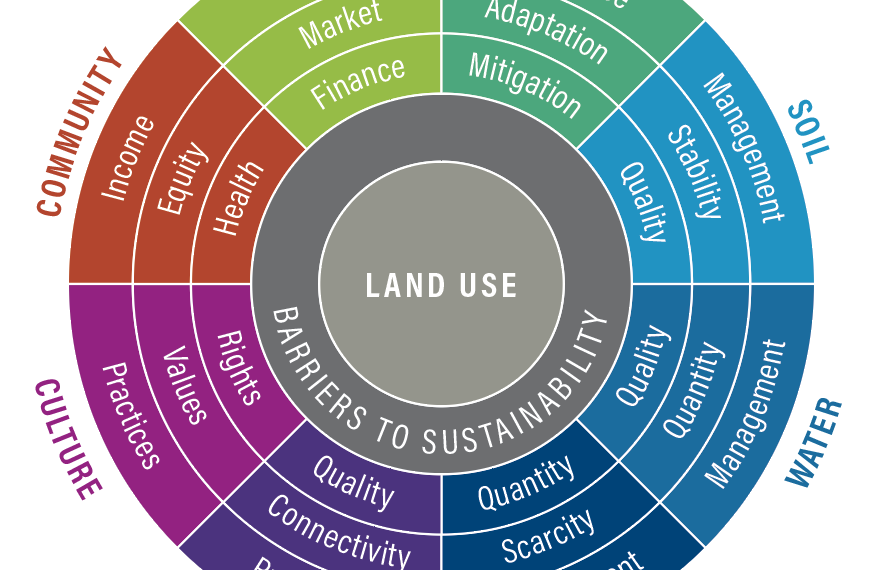The purpose of this guide is to provide anyone actively restoring land—governments, companies, communities, technicians— with a comprehensive system to measure their progress based on choices and goals tailored to their needs. It is focused on choices and understanding the potential trade-offs and synergies when developing a restoration project.
The tool guides users through basic questions about the process to restore land: Why is restoration needed in the first place? What will the restored land be used for? What are the barriers that could prevent sustainability (including drivers of degradation and enabling factors)? What are the constraints and priorities for monitoring restoration?
These questions help establish goals, identifying quantitative data, and present a methodology to track progress.

Users select criteria by identifying constraints and priorities and the available high-quality data. Then they can set goals and targets that may include biophysical and social factors, ecosystem goods and services, or goals under UN initiatives in order to allow a flexible approach. The guide ultimately helps create an indicator framework with indicators and metrics specific to each scenario, which can be turned into an optional index to measure tangible results.
This flexible guide, developed by the Food and Agriculture Organization (FAO) and WRI, presents an approach to identifying priorities and indicators for restoration monitoring, acknowledging that there can be as many possible scenarios as available landscapes. It is designed to be a supportive starting point to help users focus on a specific landscape context, considering goals, constraints, priorities, targets, indicators, metrics, indexes, and data.
The proposed methodology facilitates monitoring land restoration efforts, which is useful to assess, for instance, how the resources invested by governments aimed are regenerating land are paying off.
The guide also offers specific cases of governments that have used this methodology as part of their restoration monitoring efforts, including El Salvador, Ethiopia, Kenya, and Malawi.



